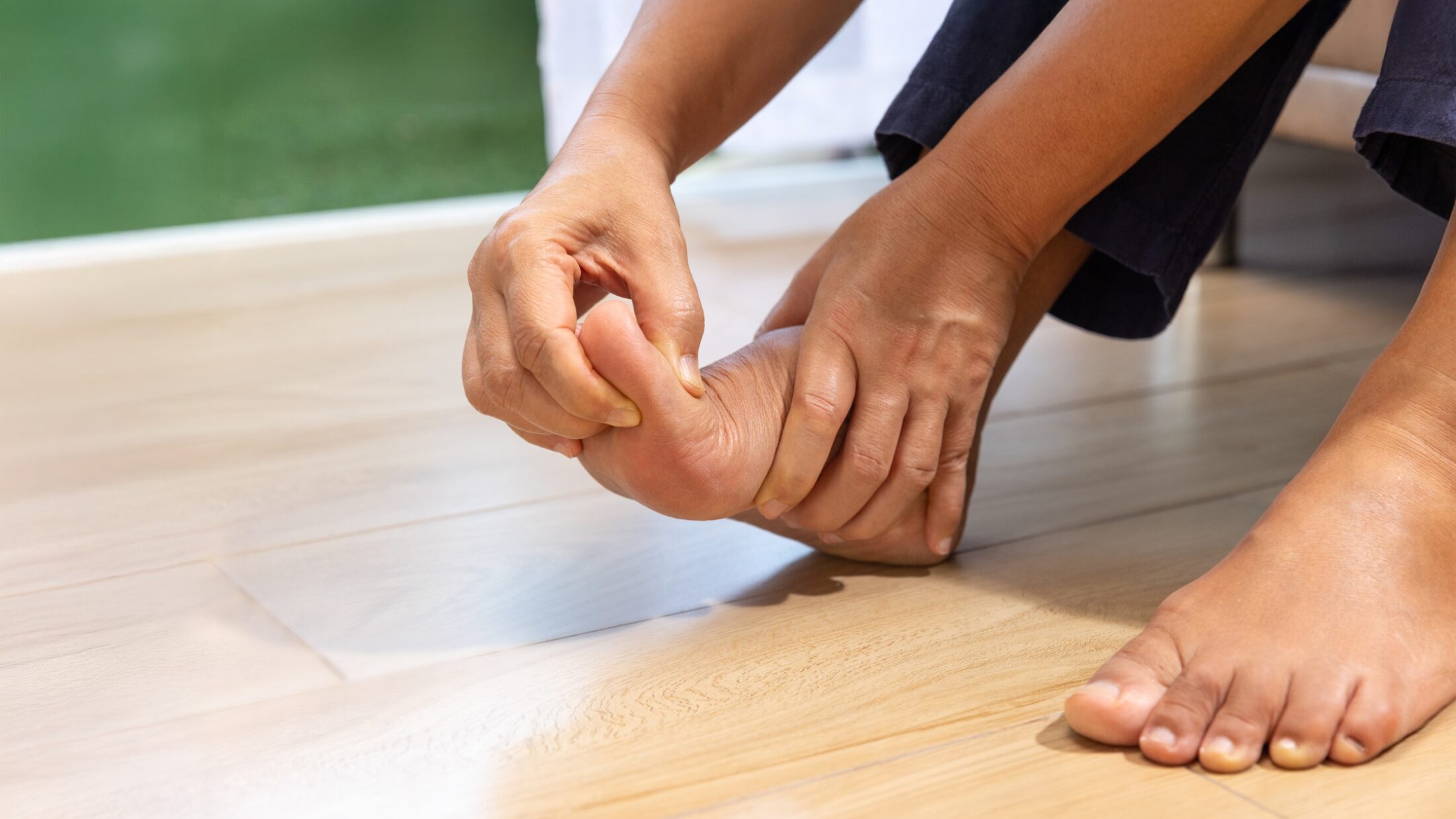Ergonomic support plays a crucial role in maintaining health and productivity. Whether you work in a traditional office or from home, optimizing your workspace ergonomically can significantly reduce the risk of injuries and long-term musculoskeletal issues. Poor ergonomics often lead to chronic pain, decreased productivity, and a decline in overall well-being.
With more people working remotely, many set up home offices without considering ergonomics typically found in corporate environments. This oversight often results in discomfort and strain, particularly in the back and wrists, common areas affected by poor workstation setup.
Incorporating back and wrist braces into your home office is an effective way to enhance ergonomic support. These braces provide targeted support to key areas of the body, helping maintain proper posture, reduce strain, and prevent injuries.
Why Ergonomics Matter
Ergonomics is the science of designing and arranging workspaces, tools, and equipment to fit the needs of the human body. The goal of ergonomics is to enhance comfort, efficiency, and safety in the workplace. By optimizing the interaction between people and their environments, ergonomics helps to minimize the risk of injury and improve overall well-being.
Ergonomics help reduce work-related injuries, particularly those affecting the musculoskeletal system. Poor ergonomic practices can lead to repetitive strain injuries (RSIs), back pain, carpal tunnel syndrome, and other musculoskeletal disorders (MSDs). These conditions often result from prolonged periods of sitting, improper posture, and repetitive motions.
By implementing ergonomic principles, such as proper workstation setup, appropriate seating, and the use of supportive devices like back and wrist braces, individuals can significantly reduce the strain on their bodies. This not only prevents injuries but also promotes a more comfortable and productive work environment.
By systematically reducing ergonomic risk factors, you can prevent costly MSDs. With approximately $1 out of every $3 in workers compensation costs attributed to MSDs, this represents an opportunity for significant cost savings. Also, don’t forget that indirect costs can be up to twenty times the direct cost of an injury.
59% average reduction of Musculoskeletal Disorders
65% average reduction in incidence rate
75% reduction in lost workdays
53% reduction in restricted days
68% reduction in worker’s compensation costs
39% reduction in cost per claim
43% decrease in labor costs
Source
Benefits of Back Braces for Ergonomic Support

Types of Back Braces:
- Lumbar Support Braces: These are designed to support the lower back and are often used to relieve chronic pain and prevent injuries.
- Posture Correctors: These braces help to improve overall posture by aligning the spine and shoulders, reducing strain on the back muscles.
- Industrial Back Braces: Typically used by workers in physically demanding jobs, these braces provide extra support during heavy lifting and repetitive motions.
- Corset Braces: These offer rigid support and are often used for more severe conditions like herniated discs or after back surgery.
How Back Braces Improve Ergonomics
By integrating the use of back braces into daily routines, individuals can experience significant improvements in comfort, posture, and injury prevention. These benefits highlight the importance of ergonomic support in maintaining spinal health and overall well-being, making back braces a valuable tool for anyone seeking to enhance their ergonomic practices and protect their lower back.
Reducing Lower Back Pain
Back braces are designed to provide targeted support to the lower back, which can significantly alleviate pressure on the spine and reduce pain. This support is particularly beneficial for individuals who spend long hours sitting or standing, as these activities can exacerbate lower back discomfort and lead to chronic pain. By stabilizing the lumbar region, back braces help to distribute weight more evenly, reducing the strain on spinal structures and muscles. This alleviation of pressure can make a noticeable difference in pain levels and overall comfort, allowing individuals to perform their daily activities with greater ease and less discomfort.
Enhancing Posture and Alignment
One of the key benefits of wearing a back brace is its ability to encourage proper spinal alignment. A well-designed back brace promotes a neutral spine position, which is essential for maintaining good posture. Proper alignment of the spine helps to prevent the development of postural issues such as kyphosis (excessive forward rounding of the back) or lordosis (excessive inward curvature of the lower back). Improved posture not only reduces back pain but also enhances overall ergonomics, contributing to better breathing, circulation, and even digestion. By maintaining correct spinal alignment, back braces support the natural curves of the spine, promoting a healthier and more efficient posture throughout the day.
Preventing Strain and Injury
Back braces provide additional support to the lower back, which is crucial for preventing muscle strains and injuries. This is especially important during activities that involve heavy lifting or repetitive movements, which can place significant strain on the back. By supporting the lumbar region, back braces help to distribute the load more evenly across the back and core muscles, reducing the risk of acute injuries such as sprains or chronic conditions like herniated discs. For individuals engaged in physically demanding tasks or those recovering from back injuries, wearing a back brace can be a preventive measure that protects the spine and enhances overall safety.
When to Use a Back Brace
- Prolonged Sitting: For individuals who spend extended periods sitting at a desk, a back brace can help to maintain proper posture and prevent lower back pain.
- Heavy Lifting: Workers involved in manual labor or activities that require lifting heavy objects can benefit from the added support of a back brace.
- Repetitive Motions: Activities that involve repetitive bending or twisting motions can strain the lower back, and a brace can help to mitigate this risk.
- Post-Injury or Surgery: After experiencing a back injury or undergoing surgery, wearing a brace can aid in the recovery process by providing necessary support and stability.
By integrating the use of back braces into your ergonomic practices, you can significantly enhance your comfort, reduce the risk of injury, and maintain better overall health while working.
Benefits of Wrist Braces for Ergonomic Support

Types of Wrist Braces:
- Wrist Splints: These braces are designed to immobilize the wrist, providing maximum support and protection for severe injuries or post-surgery recovery.
- Compression Wrist Braces: These offer mild support and are used to reduce swelling and discomfort in conditions like tendonitis or mild sprains.
- Thumb Spica Braces: These braces stabilize both the wrist and the thumb, providing support for conditions like De Quervain’s tenosynovitis.
- Carpal Tunnel Braces: Specifically designed to relieve pressure on the median nerve, these braces are used to manage symptoms of carpal tunnel syndrome.
Benefits of Wearing Wrist Braces
By integrating wrist braces into daily routines, individuals can benefit from reduced pain and strain, better support during repetitive tasks, and effective prevention of conditions such as carpal tunnel syndrome.
Reducing Wrist Strain and Pain
Wrist braces provide targeted support to the wrist joint, significantly alleviating strain and pain. By restricting movements that could exacerbate discomfort, wrist braces stabilize the wrist. This stabilization particularly benefits individuals who suffer from chronic wrist pain or are recovering from an injury. The support a wrist brace offers can reduce inflammation and promote healing, ensuring proper support for the wrist during everyday activities.
Supporting Repetitive Tasks and Typing
Many jobs involve repetitive tasks such as typing, which can put a considerable amount of stress on the wrists. Prolonged periods of repetitive motion can lead to repetitive strain injuries (RSIs), which are common among office workers and individuals who perform tasks that require continuous wrist movements. Wearing a wrist brace during these activities helps to maintain proper alignment of the wrist, reducing the risk of developing RSIs. By keeping the wrist in a neutral position, a wrist brace can prevent the strain that often results from repetitive tasks, thereby promoting better ergonomic practices and reducing the likelihood of injury.
Preventing Carpal Tunnel Syndrome
Carpal tunnel syndrome is a prevalent condition caused by the compression of the median nerve within the wrist. This condition can lead to symptoms such as pain, numbness, and tingling, which can significantly impact an individual’s ability to perform daily tasks. Wrist braces designed specifically for carpal tunnel syndrome help to keep the wrist in a neutral position, reducing pressure on the median nerve. By alleviating this pressure, wrist braces can help to relieve the symptoms associated with carpal tunnel syndrome, allowing individuals to maintain their productivity and comfort. Regular use of a wrist brace can be an effective preventive measure for those at risk of developing this condition, providing both support and relief from symptoms.
When to Use a Wrist Brace
- Repetitive Strain Activities: Individuals who perform repetitive motions, such as typing, sewing, or assembly line work, can benefit from the support provided by wrist braces.
- Sports Injuries: Athletes involved in activities like tennis, golf, or weightlifting are prone to wrist injuries and can use braces to prevent or manage these injuries.
- Post-Injury Recovery: After sustaining a wrist injury, wearing a brace can aid in the healing process by providing stability and reducing movement.
- Chronic Conditions: Conditions such as arthritis or carpal tunnel syndrome can cause chronic wrist pain, and braces can provide ongoing relief and support.
By incorporating wrist braces into your ergonomic practices, you can significantly reduce the risk of wrist strain and injury, enhance comfort during repetitive tasks, and maintain better overall hand health.
Upgrade Your Workspace with Ergonomic Support
Using back and wrist braces for ergonomic support offers numerous benefits, including reducing lower back pain, improving posture and alignment, and preventing strain and injuries. Wrist braces help to alleviate wrist strain, support repetitive tasks, and prevent conditions like carpal tunnel syndrome. These devices are essential tools in maintaining a healthy, comfortable, and productive work environment, especially for those working from home.
Incorporating ergonomic practices into your home office setup is crucial for long-term health and well-being. By prioritizing ergonomics, you can minimize the risk of work-related injuries and enhance your overall comfort and productivity. Simple adjustments, such as using back and wrist braces, can make a significant difference in your daily work routine.
Enhance your workspace comfort and health by exploring Care-Med LTD’s collection of ergonomic support products. From custom orthotics to a wide range of body braces and compression wear, Care-Med LTD offers solutions tailored to meet your ergonomic needs.
Share This Story, Choose Your Platform!
Table of Contents
We specialize in orthotics, body braces, and compression wear tailored to your unique needs in Toronto. Reach out to us at info@caremed.care or call 416-782-5353 to book your fitting and consultation.
Experience the difference of customized solutions designed just for you.











